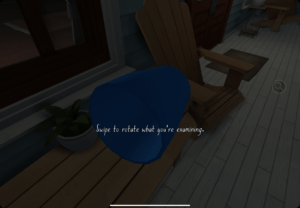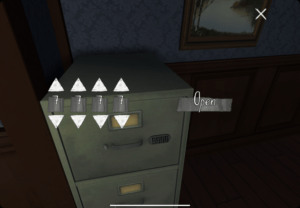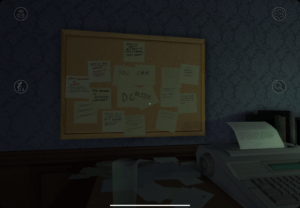Gone Home is a first-person exploration game developed by The Fullbright Company available on the App Store, Nintendo Switch, PS4, XBox, and Epic Games. The game’s premise is that you (Katie Greenbriar) arrive home after a year abroad and find the house empty, leaving you to explore and uncover the mystery behind your family’s disappearance. Although the age range is not specified, I would say the game is for anyone 13+ who enjoys a good mystery accompanied by a well-written narrative, as it touches upon some complex issues surrounding adolescence, identity, and self-discovery.
Central Argument
In Gone Home, the fusion of environmental storytelling and exploration-centered game mechanics within the intricate, elaborate architecture of the home not only facilitates non-linear exploration but also drives the narrative, offering players a captivating experience that unravels the mystery of the Greenbriar family through immersive exploration and discovery.
Analysis
At the start of the game, players are given context about Katie’s extended period abroad and are then presented at the front door of the Greenbriars’ house. From here, players begin to uncover the mystery behind the family’s disappearance through a variety of exploration-centered mechanics, such as walking + looking around the house, picking up + examining objects, reading notes, and listening to audio recordings. Nearly every object in the game is interactive, and these objects often contain contextual information that adds depth to the narrative. For example, a homework assignment revealed that Sam was having troubled thoughts, implying that she was going through a rough patch. Another note revealed that Sam was getting picked on at school, broadening my contextual awareness of Sam’s personal life.


Throughout the game, players also discover audio diaries and written documents that provide additional context and backstory. These recordings and notes offer insights into the lives of the characters, their relationships, and the events that unfolded in the house. By actively seeking out and listening to these recordings, players get to understand the dynamics within the Greenbriar home and deepen their understanding of the narrative. Furthermore, certain parts of the narrative cannot be revealed to the player until they successfully figure out a lock combination, find the key to the basement/attic, or discover a secret trapdoor. By having these roadblocks that can only be overcome by exploring the house for clues and salient information, players are forced to engage with the exploration-centered mechanics to progress in uncovering the narrative behind the mystery.

In addition to the exploration-centered mechanics, environmental storytelling enables Gone Home to successfully weave mystery through its mechanics. Through its intricate layout, design, and myriad of items found within, one can argue that the house itself is a character in the story, as it is this physical space that does a bulk of the storytelling. Every room, from the cluttered attic to the meticulously organized library, tells a part of the family’s history. Unlike other mystery games such as Her Story where players engage in linear exploration by watching a series of police interview videos, the open-ended nature of exploration in Gone Home allows players to uncover the story at their own pace. Players move freely through the house, exploring rooms in any order they choose. This non-linear approach to storytelling allows players to uncover the narrative in a way that feels natural to them, deepening their connection to the story.

Although players can explore non-linearly, Gone Home still follows a narrative arc. For example, there is a total of 23 audio tapes that players discover throughout the game. Although players can explore the house however they wish, the audio tapes are revealed in a fixed, linear order and become accessible as players explore different areas of the house and trigger specific events. This deliberate pacing allows the story to unfold in a structured manner, ensuring that players uncover key pieces of information at appropriate points in the narrative.
At the same time, elements of looping can be found within the narrative structure. As players progress through the game, they may revisit certain areas of the house as they uncover new information or gain access to previously inaccessible rooms. This revisiting of spaces creates a sense of continuity and allows players to see how their understanding of the story evolves over time.
Although the non-linear approach to exploration provides freedom and flexibility, one critique I have is that because there are so many rooms to explore and items to inspect, exploration can feel overwhelming and arduous. At one point I wasn’t sure if I was even playing the game correctly because I felt like I wasn’t making any progress. Therefore, I believe non-linear exploration can be a double-edged sword in Gone Home.



